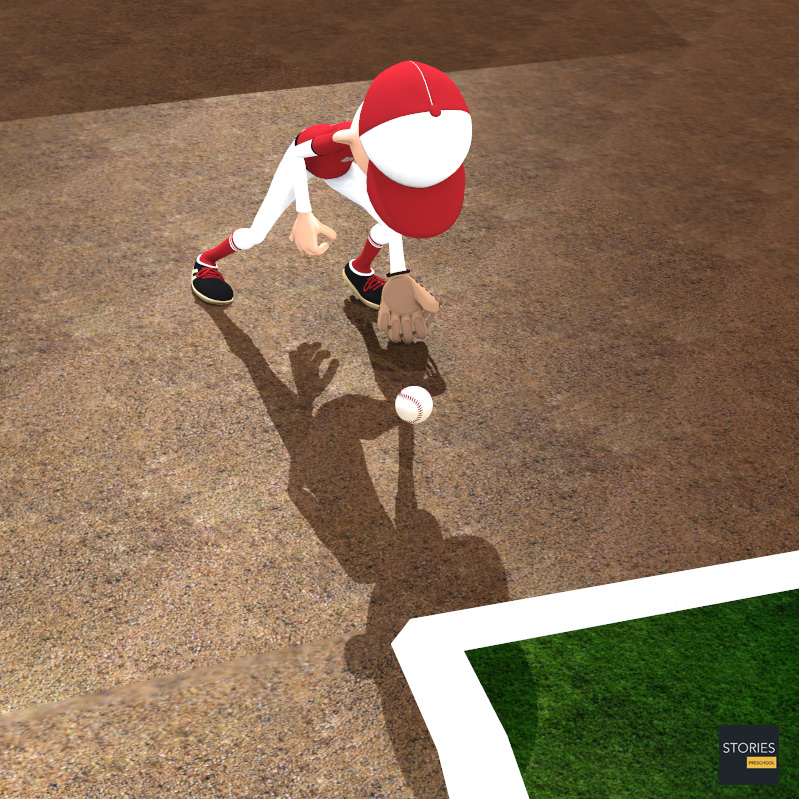Baseball

Error
In baseball statistics, an error is an act, in the judgment of the official scorer, of a fielder misplaying a ball in a manner that allows a batter or baserunner to advance one or more bases or allows an at bat to continue after the batter should have been put out. The term error can also refer to the play during which an error was committed.

Relationship to other Statistical Categories
An error does not count as a hit but still counts as an at bat for the batter unless, in the scorer's judgment, the batter would have reached first base safely but one or more of the additional base(s) reached was the result of the fielder's mistake. In that case, the play will be scored both as a hit (for the number of bases the fielders should have limited the batter to) and an error. However, if a batter is judged to have reached base solely because of a fielder's mistake, it is scored as a "hit on error," and treated the same as if the batter had been put out, hence lowering his batting average.
Similarly, a batter does not receive credit for a run batted in (RBI) when runs score on an error, unless the scorer rules that a run would have scored even if the fielder had not made a mistake. For example, if a batter hits a ball to the outfield for what should be a sacrifice fly and the outfielder drops the ball for an error, the batter will still receive credit for the sacrifice fly and the run batted in.
If a play should have resulted in a fielder's choice with a runner being put out and the batter reaching base safely but the runner is safe due to an error, the play will be scored as a fielder's choice, with no hit being awarded to the batter and an error charged against the fielder.

Passed balls and wild pitches are separate statistical categories and are not scored as errors.
If a batted ball were hit on the fly into foul territory, with the batting team having no runner(s) on base, and a fielder misplayed such ball for an error, it is possible for a team on the winning side of a perfect game to commit at least one error, yet still qualify as a perfect game.
There is a curious loophole in the rules on errors for catchers. If a catcher makes a "wild throw" in an attempt to prevent a stolen base and the runner is safe, the catcher is not charged with an error even if it could be argued that the runner would have been put out with "ordinary effort." There is therefore a "no fault" condition for the catcher attempting to prevent a steal. However, when considering that the majority of stolen base attempts are successful (around 2 successes per failure), this "no fault rule" is understandable due to the extreme difficulty of throwing out runners. If the runner takes an additional base due to the wild throw, an error is charged for that advance. However, if the catcher's glove is hit by the bat, it is counted as a catcher's interference and the catcher is given an error unless the batter gets a hit off the play.
Statistical Significance
Traditionally, the number of errors was a statistic used to quantify the skill of a fielder. Research has shown that the error rate is higher when the quality of fielding is suspect, ex. the performance of an expansion team in its first year, or the fielding done by replacement players during World War II, and is lower when playing conditions are better, ex. on artificial turf and during night games.
However, fans and analysts have questioned the usefulness and significance of errors as a metric for fielding skill. Notably, mental misjudgments, such as failure to cover a base or attempting a force out when such a play is not available, are not considered errors.
A more subtle, though more significant objection to the error, as sabermetricians have noted, is more conceptual. In order for a fielder to be charged with an error, he must have done something right by being in the correct place to be able to attempt the play. A poor fielder may "avoid" many errors simply by being unable to reach batted or thrown balls that a better fielder could successfully reach. Thus, it is possible that a poor fielder will have fewer errors than any fielder with higher expectancies.
In recent times, official scorers have made some attempt to take a fielder's supposed "extraordinary" effort or positioning into account when judging whether the play should have been successful given ordinary effort. However, this still leaves statistics, such as fielding percentage, that are based on errors as a way to compare the defensive abilities of players.
Errors also hold significance in calculating the earned run average (ERA) of a pitcher. Runs scored due to an error are unearned, and do not count toward a pitcher's ERA.
SPORTS

RESOURCES
This article uses material from the Wikipedia articles "Baseball" and "Error", which is released under the Creative Commons Attribution-Share-Alike License 3.0.
© Stories Preschool. All Rights Reserved.












